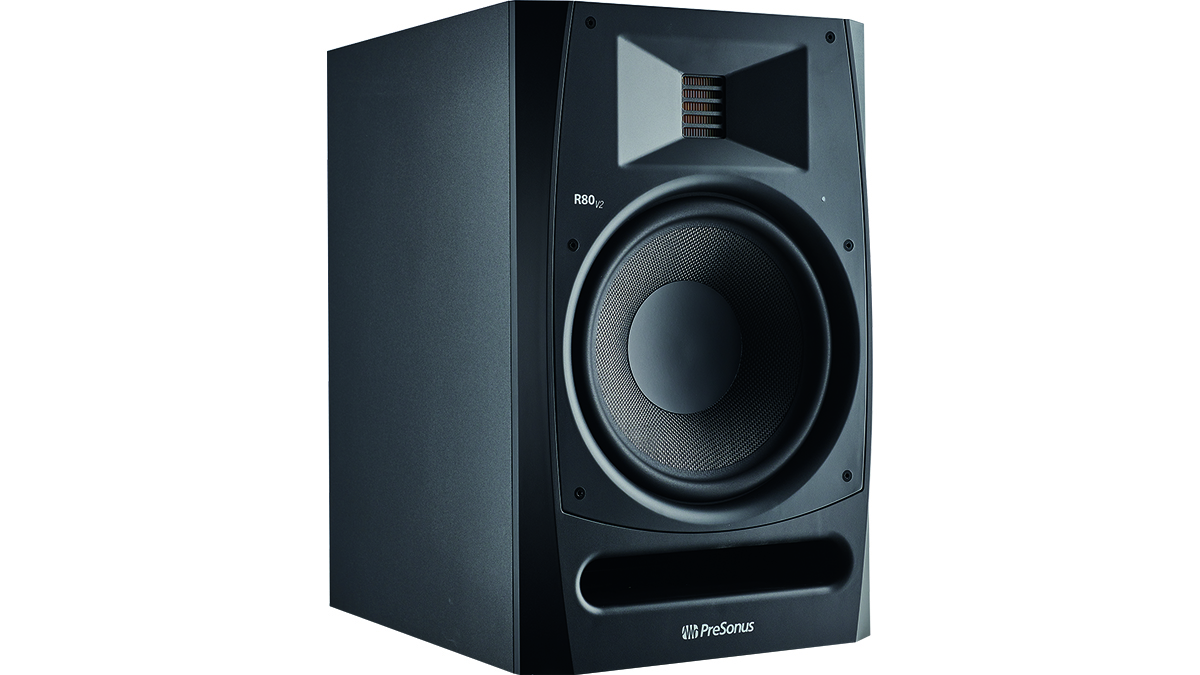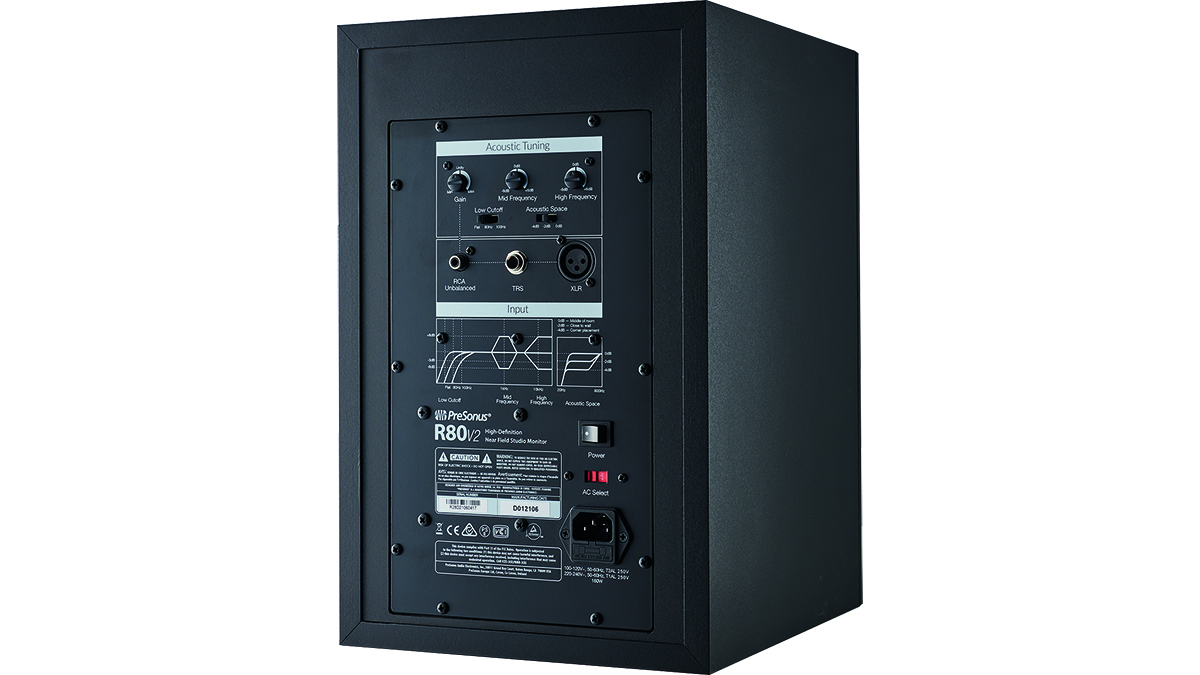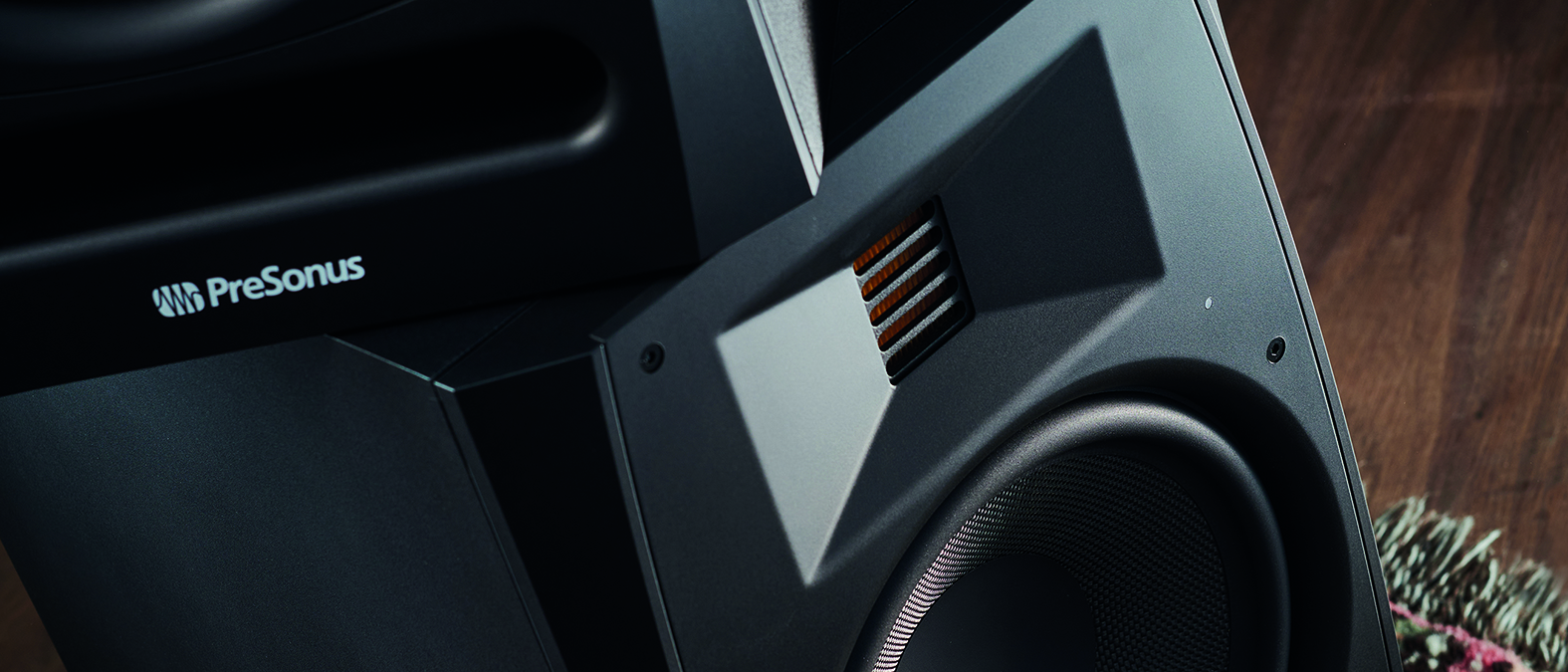MusicRadar Verdict
A solid performer that, with its unusual AMT tweeter, excels at revealing nuances. Also a good monitoring choice for difficult spaces.
Pros
- +
AMT driver adds a spacious dimension to the top end.
- +
Extensive EQ controls make setup in poor rooms straightforward.
- +
Exhibits clarity and coherence.
Cons
- -
Maybe too pricey for some home users.
- -
Some ears may prefer more traditional tweeters.
MusicRadar's got your back
PreSonus R80 V2: What is it?
PreSonus’ original R80 near-field active monitor was hardly long in the tooth, but the Baton Rouge-based brand (now owned by Fender) obviously thought it was high time for an update. Not that we’re complaining, their engineers have made some very welcome changes.
The R80 originally caught our attention because of its unusual, rather eye-catching, ribbon-based tweeter technology. It’s not unique by any means – Genelec has toyed with this kind of tweeter design, and Adam Audio uses it a lot – but not common.
The new R80 V2 has continued the ribbon tradition, but before we look at the whys and wherefores let’s get a handle on what else remains the same and what’s been shipped out.

PreSonus R80 V2: Performance and verdict
Weighing in at about 20lbs each, and measuring well over a foot high, and almost as deep, these monitors are quite a lump, but they’ll comfortably sit on, or around, a typical studio desk – just. We mention this early on because the character of these monitors, together with the improvements that PreSonus have made, makes them attractive for home studio/small studio use.
Other than that intriguing gold ribbon, there’s not much to see. A letterbox-shaped port sits below the 8” custom-woven composite woofer but, besides the fact it no longer sports a blue trim panel, this new version looks very similar to the original. Which isn’t a bad thing.
Round the back though, some significant changes have been made. Where the R80 had relatively basic preset-based EQ controls, the V2 now has high-frequency and mid-frequency rotary dials, plus a low cut-off multi-switch.
There’s also a revised implementation of PreSonus’ Acoustic Space Control, which cuts frequencies below 800Hz by either -4 dB or -2 dB to compensate for the bass boost that occurs when a speaker is placed near a wall or in a corner. Handy if the room you’re working in is not acoustically perfect.
On to that curious-looking tweeter. It’s an Air Motion Transformer (AMT), to give it its proper name, all 6.8 square inches of it. Essentially, it’s a pleated ribbon transducer, a form of driver renowned for being able to accurately reproduce higher frequencies. Some of these highs go beyond the range of our hearing, but they’re said to imbue airiness.
AMTs have several other useful qualities too. The increased headroom they provide makes the monitors in which they’re installed less likely to exhibit distortion, and their very fine membranes, in this case, 0.01mm folded Kapton, make them extremely responsive. Because of this, they’re much loved for their smoothness and sonic clarity.

AMTs also benefit from a much broader projection area than traditional tweeter designs. With the R8 V2, this is much more pronounced in the horizontal plane, which in theory should result in a wide sweet spot with focused vertical dispersion, ie, fewer reflections from your ceiling, desk and floor but a wider, more accurate listening area.
Combine these characteristics with the front-ported R80 V2’s new EQ controls and you’ve got monitors that can be fine-tuned to suit the acoustic characteristics of small or troublesome rooms – ie, most home studios. They can’t magically turn a poor room into something that sounds truly outstanding, but they do offer more promise than most.
OK, how do they really sound? With all that control, setup took a while, but it was a rewarding process. Certainly, less frustrating than trying to coax a good sound from monitors where you have next to no control.
As you’d expect, bass delivery is excellent, tight and not at all flabby – we suspect the 8” drivers will negate the need for a sub in most setups. Mids are balanced, articulate and punchy, yet not aggressively so. But what about that promised clarity and airiness in the top end?
Well, if there is a difference it is a subtle one. Yes, there’s a palpable sense of spaciousness evident with the R80 V2. There’s also purity, precision, and most importantly, detail. The listening experience is subtle because, well, that’s what we’re listening for – subtleties. Anything more wouldn’t have been a true representation, which isn’t a good trait for a studio monitor.
MusicRadar verdict: A solid performer that, with its unusual AMT tweeter, excels at revealing nuances. Also a good monitoring choice for difficult spaces.
PreSonus R80 V2: The web says
"PreSonus’ R80 V2 monitors are a worthy choice for those moving on from the entry-level market but can also be useful for writing rooms and production suites without breaking the bank."
MusicTech
PreSonus R80 V2: Hands-on demos
PreSonus Audio Electronics
Inside Audio
kreatve snd
PreSonus R80 V2: Specifications
- KEY FEATURES 8” Woven composite LF Driver; 6.8 in2 (4400 mm2) AMT HF Driver.
- LF AMPLIFIER: Class A/B, 75W.
- HF AMPLIFIER: Class A/B, 65W.
- Peak SPL at 1m: 107 dB.
- Frequency response: 40 Hz – 22 kHz.
- DIMENSIONS: 241 x 379 x 309mm.
- WEIGHT: 9kg per unit.
- CONTACT: PreSonus
When Simon's childhood classical guitar teacher boasted he 'enjoyed a challenge', the poor man had no idea how much he'd underestimated the scale of the task ahead. Despite Simon's lack of talent, the experience did spark a lifelong passion for music. His classical guitar was discarded for an electric, then a room full of electrics before Simon discovered the joys of keys. Against all odds, Simon somehow managed to blag a career as a fashion journalist, but he's now more suitably employed writing for MusicRadar and Guitar World. When not writing or playing, he can be found terrifying himself on his mountain bike.
“We were arguing a lot and we were miserable”: How Green Day exceeded expectations with their most ambitious song
"There’s plenty for us guitarists to learn – and ‘less is more’ is the overriding lesson": how to play like George Harrison on The Beatles' Abbey Road
“They didn’t like Prince’s bikini underwear”: Prince’s support sets for the The Rolling Stones in 1981 are remembered as disastrous, but guitarist Dez Dickerson says that the the crowd reaction wasn’t as bad as people think











